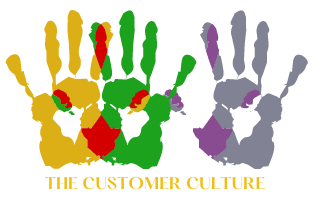In the realm of customer-centric business strategies, measuring customer satisfaction stands as a pivotal pillar. Understanding how satisfied your customers are with your products or services is crucial for maintaining and improving customer relationships. In this blog post, we’ll explore the significance of measuring customer satisfaction, dive into key metrics like Net Promoter Score (NPS) and Customer Satisfaction Score (CSAT), and introduce tools and techniques for gathering and analyzing customer feedback.
- Why Measure Customer Satisfaction?
- Customer satisfaction serves as a barometer of your business’s performance and its ability to meet customer expectations.
- By measuring customer satisfaction, businesses can identify areas for improvement, enhance the overall customer experience, and foster loyalty and advocacy among their customer base.
Key Metrics for Measuring Customer Satisfaction
- a. Net Promoter Score (NPS):
- NPS measures the likelihood of customers to recommend your business to others on a scale of 0 to 10. It categorizes respondents into Promoters (score 9-10), Passives (score 7-8), and Detractors (score 0-6) and calculates the NPS by subtracting the percentage of Detractors from the percentage of Promoters.
- NPS provides valuable insights into customer loyalty and serves as a leading indicator of business growth.
- b. Customer Satisfaction Score (CSAT):
- CSAT measures the level of satisfaction customers have with a specific interaction or experience, often using a rating scale (e.g., from very satisfied to very dissatisfied).
- CSAT helps businesses evaluate the success of individual touchpoints in the customer journey and identify areas for improvement.
- Tools and Techniques for Gathering Customer Feedback
- Online Surveys: Utilize online survey tools like SurveyMonkey, Google Forms, or Typeform to collect feedback from customers. Customize surveys to gather insights on specific aspects of the customer experience.
- Customer Feedback Forms: Incorporate feedback forms on your website, in emails, or at physical locations to capture customer sentiments in real-time.
- Social Media Listening: Monitor social media channels for mentions, comments, and reviews related to your brand. Social listening tools like Hootsuite or Sprout Social can help track customer sentiment and engagement.
- Customer Interviews and Focus Groups: Conduct one-on-one interviews or organize focus groups to delve deeper into customer perceptions and preferences.
- Analyzing and Acting on Customer Feedback
- Once feedback is collected, businesses must analyze it to extract actionable insights. Look for trends, common pain points, and areas of strength or weakness.
- Prioritize actions based on feedback that will have the greatest impact on improving customer satisfaction and loyalty.
- Communicate with customers about changes made in response to their feedback to demonstrate your commitment to their satisfaction.
Measuring customer satisfaction is not just a metric—it’s a strategic imperative for businesses committed to delivering exceptional customer experiences. By leveraging key metrics like NPS and CSAT and employing tools and techniques for gathering and analyzing customer feedback, businesses can gain valuable insights, drive continuous improvement, and cultivate long-term customer loyalty. Embrace the journey of understanding and enhancing customer satisfaction, and watch your business thrive in the eyes of your customers.
